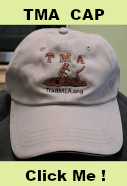French trade guns were shipped over by the thousands and widely distributed through the Great Lakes region, down the Miss River and along the Gulf Coast--and traded inland from those areas. This trade began in the 17th cent and by the late 1600s all were flintlock smoothbore long arms that broadly resembled each other except for details of hardware such as the designs of buttplates, sideplates, trigger guards, etc. Most are known chielfy from archeological finds. See Hamilton's book on colonial arms for the best single reference. Many or most had straighter butt stocks than the "classic" Tulle fusil de chasse of the early 18th cent. The so-called "cow's foot" butt was perhaps not as common as assumed by most makers of French guns these days. These various trade guns were made in St Etienne, Tulle, Liege and other europoean sites. Long and gracefull and lighter than many of the English arms both in weight and ball size, they were widely used by native Americans. Many made today are 20 gauge [.62] however originals also included many smaller gauges approximating 24 and 28 gauge and less.




